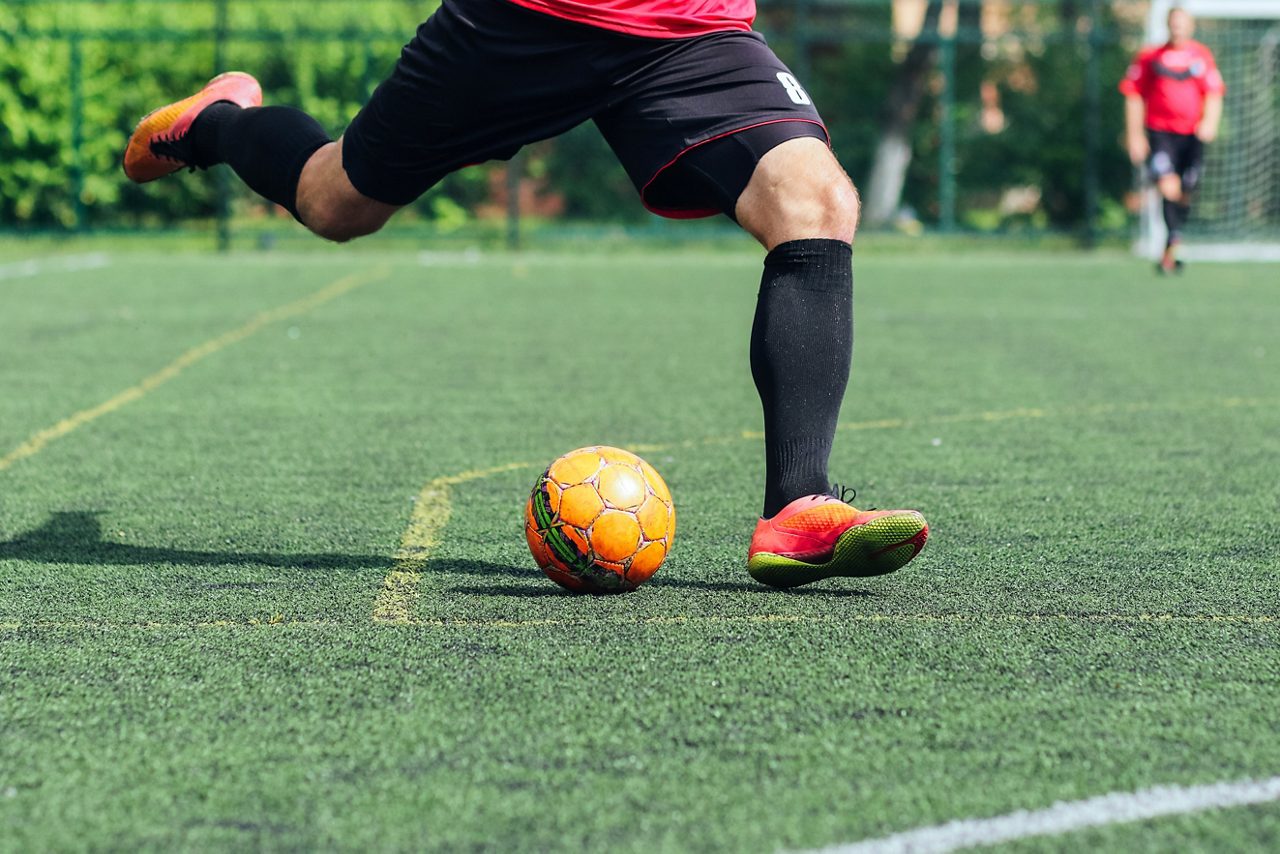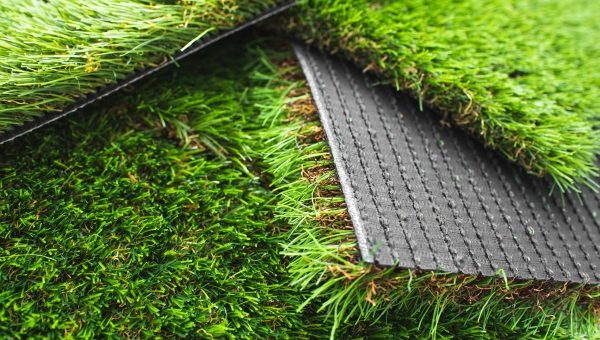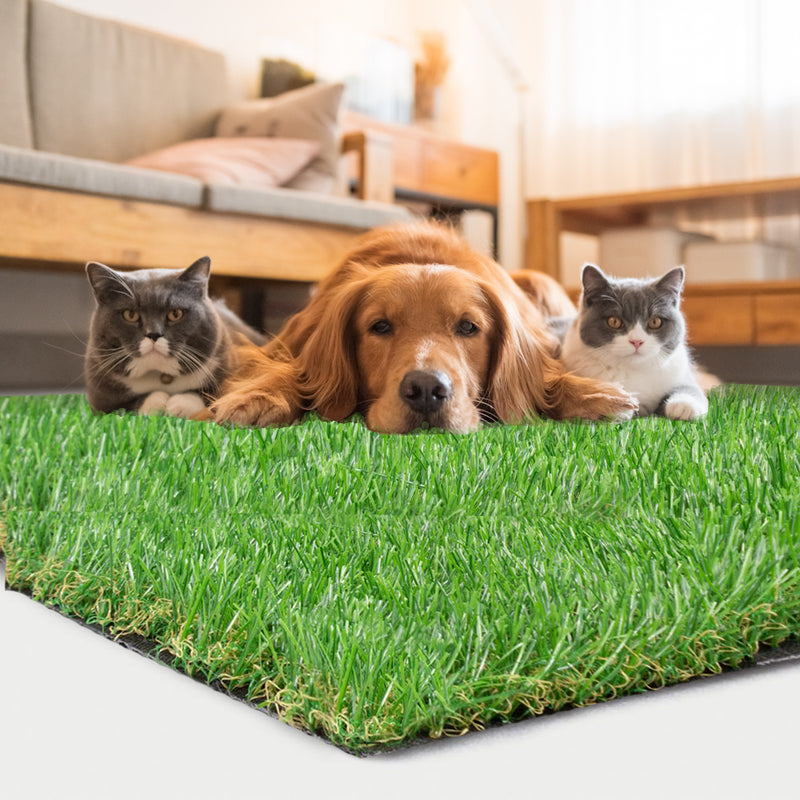Look Into the Environmental Benefits of Opting for Artificial Lawn Solutions
The adoption of synthetic grass solutions offers an engaging chance to address pushing ecological obstacles. By significantly decreasing water use and minimizing the application of damaging chemicals, these choices not just promote sustainable landscaping but also secure regional ecosystems. Moreover, the reduced carbon footprint connected with reduced maintenance activities adds to a much more lasting method to land administration. However, the ramifications of these advantages prolong beyond mere conservation initiatives, questioning concerning their long-term effect on environment preservation and general ecological balance. Discovering these measurements exposes a complicated interplay worth taking into consideration.
Water Conservation Benefits
One of the most substantial benefits of synthetic turf is its capability to conserve water. Conventional grass yards require significant watering, particularly in areas susceptible to drought or water limitations. In contrast, man-made lawn does not require watering, dramatically reducing the overall demand for water sources. This feature is particularly advantageous in deserts where water shortage is a pressing issue.
By getting rid of the need for normal watering, synthetic turf adds to sustainable landscape practices and helps mitigate the environmental effect of too much water usage. The preservation of water prolongs to the reduction of runoff, which can lead to soil erosion and river air pollution.
Furthermore, the installment of synthetic grass enables towns and house owners to assign water resources a lot more efficiently, focusing on crucial uses such as drinking water and agriculture. The change towards synthetic grass not only promotes liable water use but likewise straightens with wider ecological objectives targeted at maintaining natural sources.
As areas significantly prioritize sustainability, the water preservation advantages of fabricated grass provide an engaging case for its fostering in residential and industrial landscape design tasks.
Reduced Chemical Use
The change to synthetic grass considerably reduces the reliance on chemical therapies frequently utilized in natural yard upkeep. Typical grass administration typically includes the application of plant foods, chemicals, and herbicides to advertise development and control parasites. These chemicals can present threats to human health, local wild animals, and the setting, adding to dirt and water contamination.
In contrast, synthetic grass removes the requirement for these harmful substances. When mounted, it needs very little maintenance, primarily including regular cleaning and irregular infill replenishment. This reduction in chemical use not just profits the prompt atmosphere but also adds to broader ecological stability. By reducing the release of synthetic substances into the environment, artificial lawn promotes healthier soil and water systems.
Additionally, the lack of chemical drainage connected with synthetic grass setups aids shield regional waterways from contamination, supporting marine life and preserving biodiversity. Arizona artificial turf. As areas progressively focus on sustainable practices, choosing fabricated turf offers a feasible option that aligns with environmental preservation objectives. Through this shift, homeowner can take pleasure in lavish eco-friendly rooms without endangering environmental health and wellness, paving the method for a much more click here for more sustainable future
Lower Carbon Footprint

Moreover, the setup of synthetic grass can cause substantial water conservation. All-natural lawns require considerable quantities of water for irrigation, which not just contributes to the carbon impact related to water removal and treatment however likewise stress regional water sources. In contrast, synthetic grass requires minimal maintenance, needing no watering, thus significantly minimizing water use and its associated energy costs.
Additionally, the durability of fabricated grass adds to its reduced carbon influence. With a life-span of up to 15 years or even more, the demand for constant substitutes is reduced, causing much less waste and reduced energy intake in production and getting rid of standard grass options. Generally, synthetic grass presents a lasting option for environmentally conscious landscape design.
Environment Conservation
Habitat conservation is an essential factor to consider in the argument over landscaping choices, particularly when comparing synthetic grass to all-natural yard. Natural grass yards usually need comprehensive upkeep, including using herbicides, chemicals, and plant foods, which can adversely influence regional communities. These chemicals can seep into the dirt and rivers, hurting indigenous vegetation and animals and interfering with local habitats.
Artificial grass eliminates the requirement for hazardous chemicals, thus safeguarding neighboring wildlife and preserving the honesty of surrounding ecosystems. The setup of fabricated lawn hop over to here can lead to the conversion of previous grass areas into more biodiverse landscapes, such as pollinator gardens or native plant areas, which can support regional wild animals.
Eventually, the change to synthetic grass not only preserves water and reduces upkeep initiatives yet likewise fosters a more harmonious connection in between top article human tasks and the native environment, advertising habitat conservation at the same time.
Long-Term Sustainability
Lasting sustainability is an essential consider evaluating the benefits of artificial turf over conventional grass yards. One of one of the most considerable benefits of man-made grass is its toughness; it can last approximately 15-20 years with minimal upkeep, whereas natural lawn requires regular reseeding and substitute. This long life reduces the demand for consistent sources, such as water, plant foods, and chemicals, which are vital for preserving a healthy turf lawn.
Furthermore, synthetic grass adds to a reduction in carbon emissions linked with yard treatment tools. Typical yards frequently need gas-powered mowers, trimmers, and blowers, all of which add to air pollution. Arizona turf. In comparison, synthetic grass gets rid of the requirement for such equipment, promoting a cleaner atmosphere
In addition, the manufacturing of man-made grass increasingly uses recycled products, improving its sustainability profile. As manufacturers adopt environment-friendly practices, the environmental impact of synthetic grass remains to decrease.

Final Thought
The adoption of synthetic grass solutions presents significant environmental benefits, consisting of significant water preservation, lowered dependence on hazardous chemicals, and a lower carbon footprint. Moreover, artificial turf help in maintaining all-natural habitats by decreasing land disruption and advertising lasting sustainability through making use of durable products. Jointly, these aspects emphasize the capacity of synthetic grass to add favorably to environmental wellness and provide a practical choice to typical landscaping techniques in an increasingly resource-conscious globe.
In comparison, fabricated grass does not need watering, dramatically minimizing the total need for water resources. By minimizing the release of artificial substances into the community, synthetic lawn promotes much healthier dirt and water systems.
Additionally, the installment of artificial lawn can result in substantial water preservation. In contrast, man-made lawn needs marginal maintenance, calling for no watering, thus dramatically lowering water usage and its associated power expenses.
